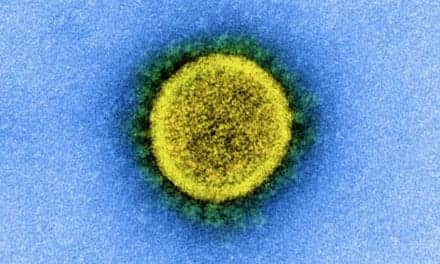Grail, Menlo Park, Calif, has presented new data for its investigational multicancer early detection blood test.1,2 The new data evaluate the performance of Grail’s test in symptomatic participants with suspicion of cancer.
Today, the majority of deadly cancers do not have guideline-recommended screening tests. As a result, most such cancers are detected only after they have progressed to late stages, when chances of survival are much lower. There is also a high unmet need for early detection in the diagnostic assessment of symptomatic patients who are being evaluated for cancer.
Using a single blood draw, Grail’s multicancer early detection technology can detect more than 50 cancers, with a very low false-positive rate of less than 1%. When a cancer signal is detected, the test can also identify with high accuracy where in the body the cancer is located. The technology could be particularly useful in directing a more efficient diagnostic workup among symptomatic patients who are being evaluated for cancer.
“We continue to make significant progress in the validation of our multicancer early detection blood test, and wanted to assess its potential to drive efficiencies in the diagnostic workup of patients who are showing symptoms,” says Alex Aravanis, MD, PhD, chief scientific officer, head of research and development, and a cofounder of Grail. “These findings show that when our multicancer test detected a cancer signal, it also identified where in the body that cancer was located with high accuracy. This is critical information for healthcare providers and demonstrates the feasibility of our test to potentially accelerate diagnosis in individuals with high suspicion of cancer by helping direct the diagnostic workup.”
The new data represent a prespecified subgroup from Grail’s foundational circulating cell-free genome atlas study, which included more than 15,000 participants with or without a diagnosis of cancer. In the recently reported subgroup analysis, participants being evaluated for suspicion of cancer were classified as clinically confirmed cancer (n = 164 in training; n = 75 in validation) or clinically confirmed noncancer (n = 49 in training; n = 15 in validation). In the confirmed noncancer group, all training and validation samples were correctly predicted as noncancer, representing 100% specificity.
In the validation set, detection across all stages in the confirmed cancer group was 46.7% (n =35/75; 95% confidence interval [CI], 35.1–58.6) at 100% specificity. When renal cancers—which were overrepresented and subject to poor detection at early stages due to low tumor cfDNA fraction—were not included, detection across stages was 59.3% (n = 35/59; 95% CI, 45.7–71.9). In stages II and above, detection was 78.9% (n = 30/38; 95% CI, 62.7–90.4), all at 100% specificity. Performance was consistent across training and validation sets.
For cancers where a signal was detected, the tissue of origin was predicted in 93.9% of samples in training (n = 62/66), and 100% in validation (n = 35/35). Of those with a tissue of origin result, accuracy was 85.5% (n = 53/62; 95% CI, 74.2–93.1) and 97.1% (n = 34/35; 95% CI, 85.1–99.9), respectively.
References
1. Nadauld L, McDonnell CH II, Liu MC, et al. The pathfinder study: assessment of the implementation of an investigational multicancer early detection test into clinical practice [abstract CT021, online]. Presentation at the American Association for Cancer Research Virtual Annual Meeting I; April 28, 2020. Available at: https://grail.com/publication/aacr-virtual-annual-meeting-i/. Accessed May 10, 2020.
2. Thiel DD, Chen X, Kurtzman KN, et al. Prediction of cancer and tissue of origin in individuals with suspicion of cancer using a cell-free DNA multicancer early detection test [abstract CT021, online]. Presentation at the American Association for Cancer Research Virtual Annual Meeting I; April 28, 2020. Available at: https://grail.com/publication/aacr-virtual-annual-meeting-i/. Accessed May 10, 2020.
Featured image: Photo © Katarzyna Bialasiewicz, courtesy Dreamstime (ID 128906270).






